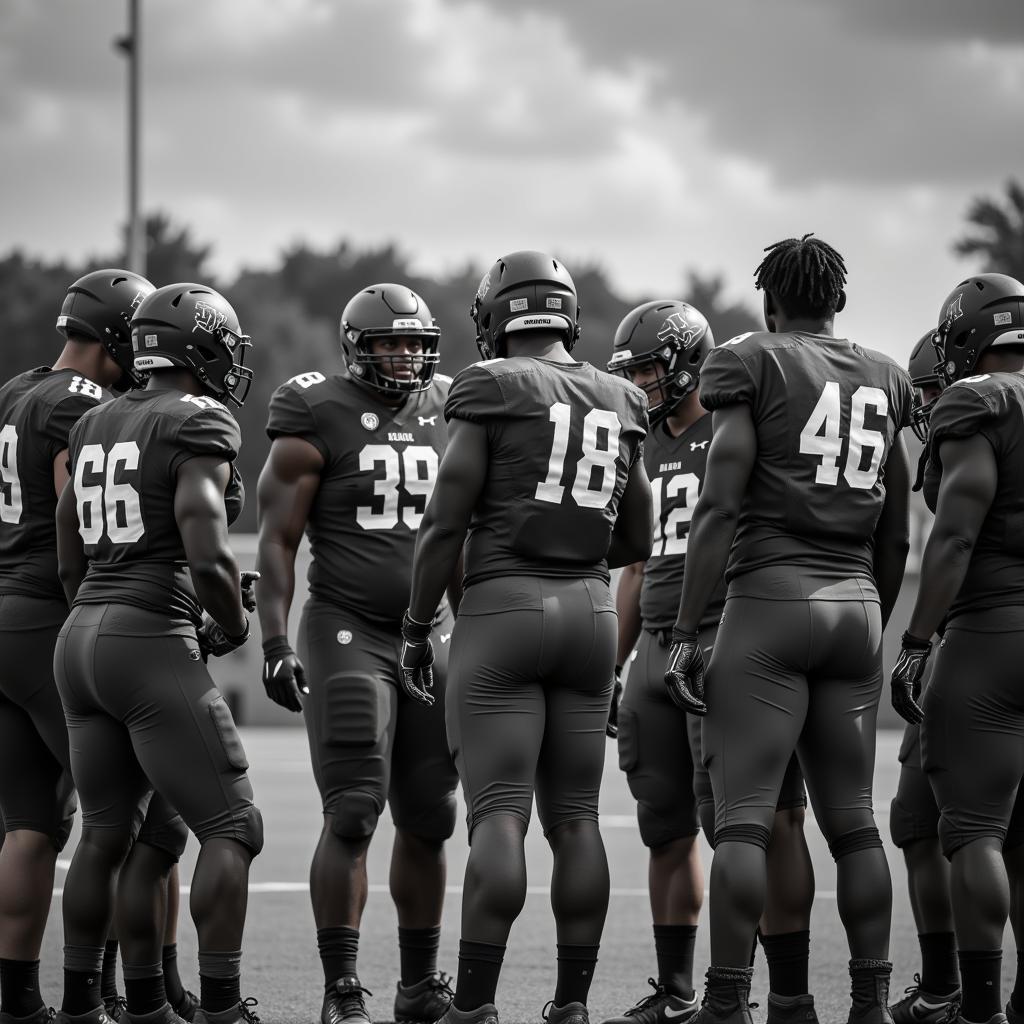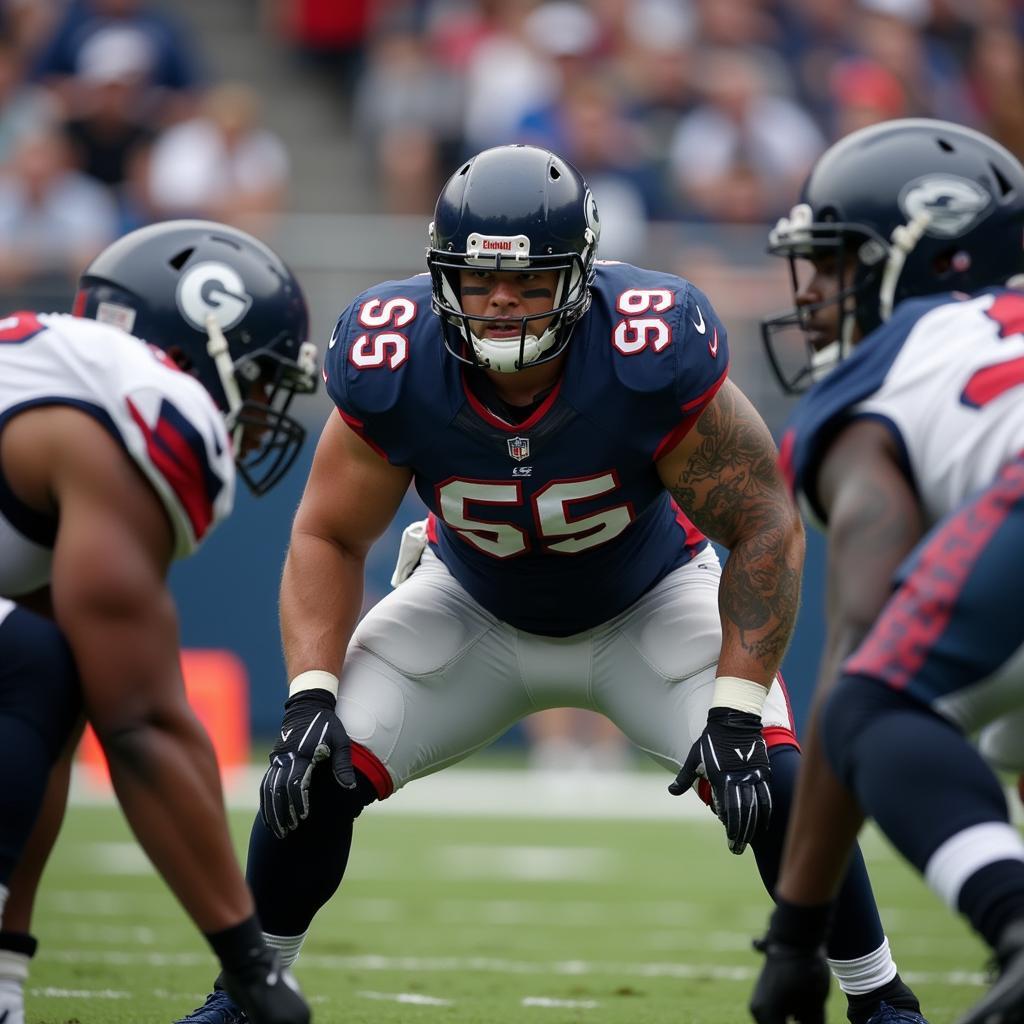Decoding the American Football Defense Playbook
October 10, 2024The American Football Defense Playbook: a labyrinth of strategic formations, assignments, and adjustments designed to counter the offensive onslaught. It’s the defensive coordinator’s masterpiece, a blueprint for gridiron chaos orchestrated to thwart the opponent’s every move.
 Defensive huddle during a game
Defensive huddle during a game
Defensive Schemes: The Foundation of the Playbook
At the heart of every defense playbook lies its scheme – a fundamental philosophy dictating player alignments, responsibilities, and overall strategic approach. Two primary schemes dominate the landscape:
1. 3-4 Defense:
This scheme features three down linemen and four linebackers, prioritizing speed, versatility, and aggressive playmaking.
- Strengths: Effective against both the run and pass, creates confusion with disguised blitzes and coverage schemes.
- Weaknesses: Susceptible to powerful running attacks if the defensive line lacks size and strength.
2. 4-3 Defense:
This scheme employs four down linemen and three linebackers, emphasizing a strong defensive front and simplified assignments.
- Strengths: Stout against the run, generates consistent pressure with its four-man defensive line.
- Weaknesses: Can be vulnerable to pass-heavy offenses and play-action passes.
 Linebacker reading the offensive formation
Linebacker reading the offensive formation
Coverage Concepts: Shielding the End Zone
Defensive coverage schemes dictate how defenders guard receivers and space, aiming to disrupt passing lanes and force turnovers. Common coverage concepts include:
-
Cover 1 (Man-to-Man): Each defender is assigned to cover a specific receiver, with one deep safety providing help over the top.
-
Cover 2 (Zone): The field is divided into two deep zones, each covered by a safety, while underneath defenders guard designated areas.
-
Cover 3 (Zone): Similar to Cover 2, but with three deep zones, each covered by a defensive back.
Defensive Fronts: Wreaking Havoc in the Trenches
Defensive fronts describe the alignment of defensive linemen and their pass-rushing responsibilities. Some common fronts include:
-
4-3 Over: The defensive line shifts towards the strong side of the offensive formation, creating a numbers advantage against the run.
-
3-4 Under: The defensive line aligns towards the weak side, utilizing speed and blitzing linebackers to generate pressure.
The Art of Disguise: Deception on Defense
Defensive playbooks thrive on deception. Disguised blitzes, coverage shifts, and pre-snap movement aim to confuse the offense, forcing quarterbacks into hurried decisions and mistakes.
“The element of surprise is crucial in football,” says Coach Michael Thompson, a veteran defensive coordinator with over 20 years of experience. “A well-disguised blitz or coverage scheme can be the difference between a sack or a touchdown.”
Situational Football: Adapting to the Game
A comprehensive defense playbook must account for various game situations. From goal-line stands to Hail Mary situations, each scenario demands a specific strategic response.
 Goal line stand defensive formation
Goal line stand defensive formation
Conclusion: Mastering the Complexity
The American football defense playbook is a dynamic and ever-evolving document. Mastering its intricacies requires a deep understanding of formations, coverages, and blitzes, along with the ability to adapt to any situation. It’s a chess match played on the gridiron, demanding strategic prowess, disciplined execution, and a relentless pursuit of defensive dominance.
For personalized guidance and support in navigating the complexities of the American Football Defense Playbook, contact us at Phone Number: 0915117113, Email: [email protected] Or visit us at: Cluster 3, Binh An Residential Group, Phu Thuong Ward, Viet Nam, Binh Phuoc 830000, Vietnam. We have a dedicated customer support team available 24/7.